Abstract
1. Ventilation was recorded on ten male and ten female healthy full-term infants during the first week after delivery, using a trunk plethysmograph. Tidal volume (VT), respiration rate (f) and pulmonary ventilation (V̇) for each respiratory cycle were measured during periods of rapid eye movement sleep (REM) and during quiet sleep when eye movements were absent (NREM).
2. It was found that mean instantaneous V̇ and f were significantly higher in all infants during REM than during NREM sleep, while mean VT was either unchanged or showed a decrease. In addition, there was significantly greater variation in instantaneous V̇, VT and f during REM as compared with NREM sleep.
3. Positive correlations were found in most infants in both sleep states between individual values of VT and the duration of the respiratory cycle (T).
4. Periodic changes in T were found in all infants during both sleep states; these periodicities may reflect the behaviour of respiratory control mechanisms operating over a longer time span than the individual respiratory cycle.
Full text
PDF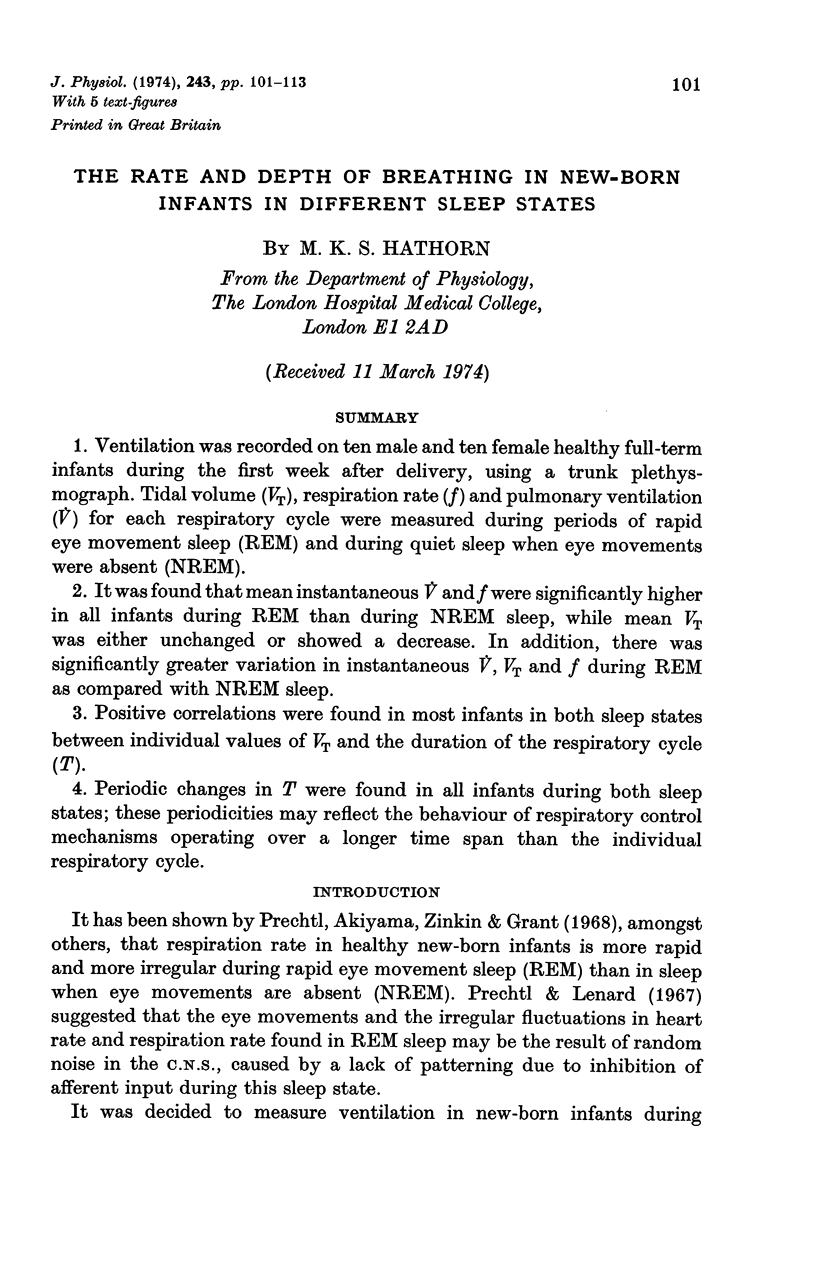

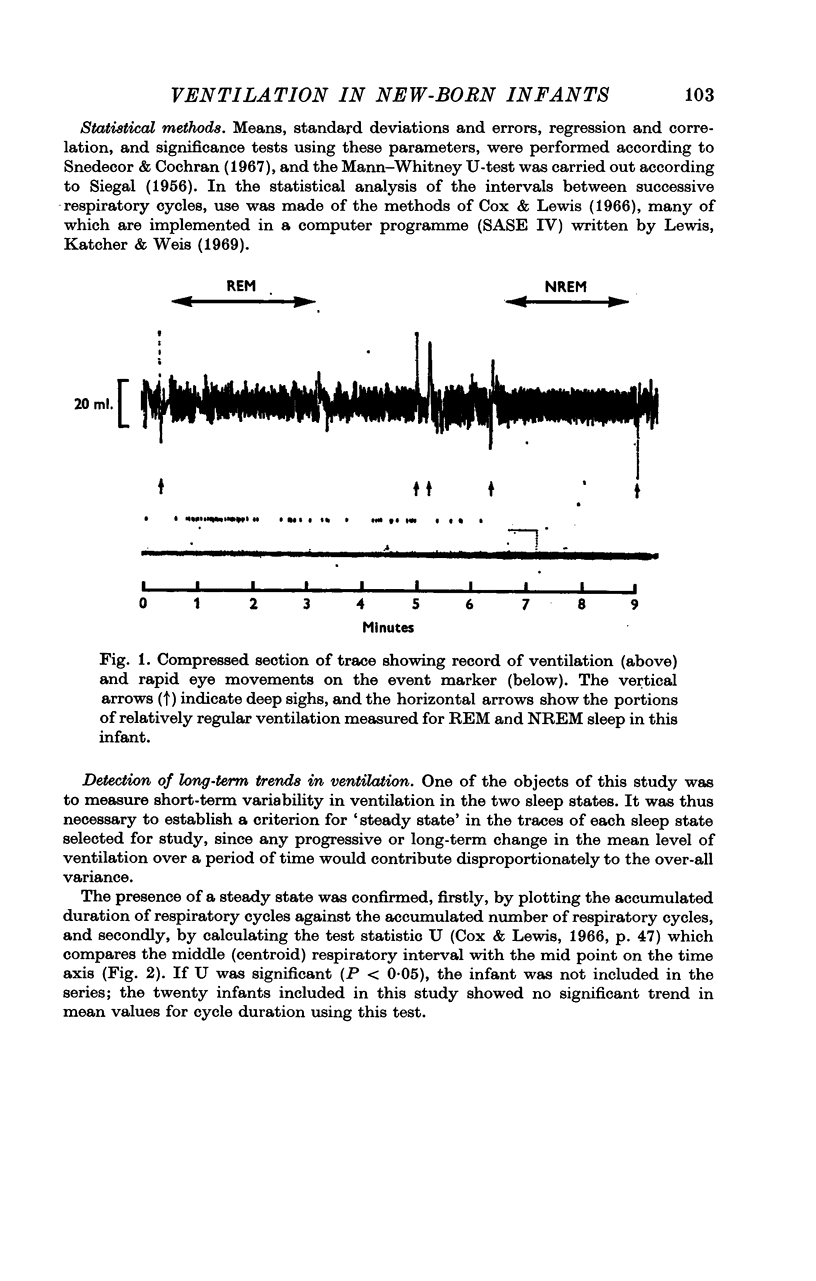
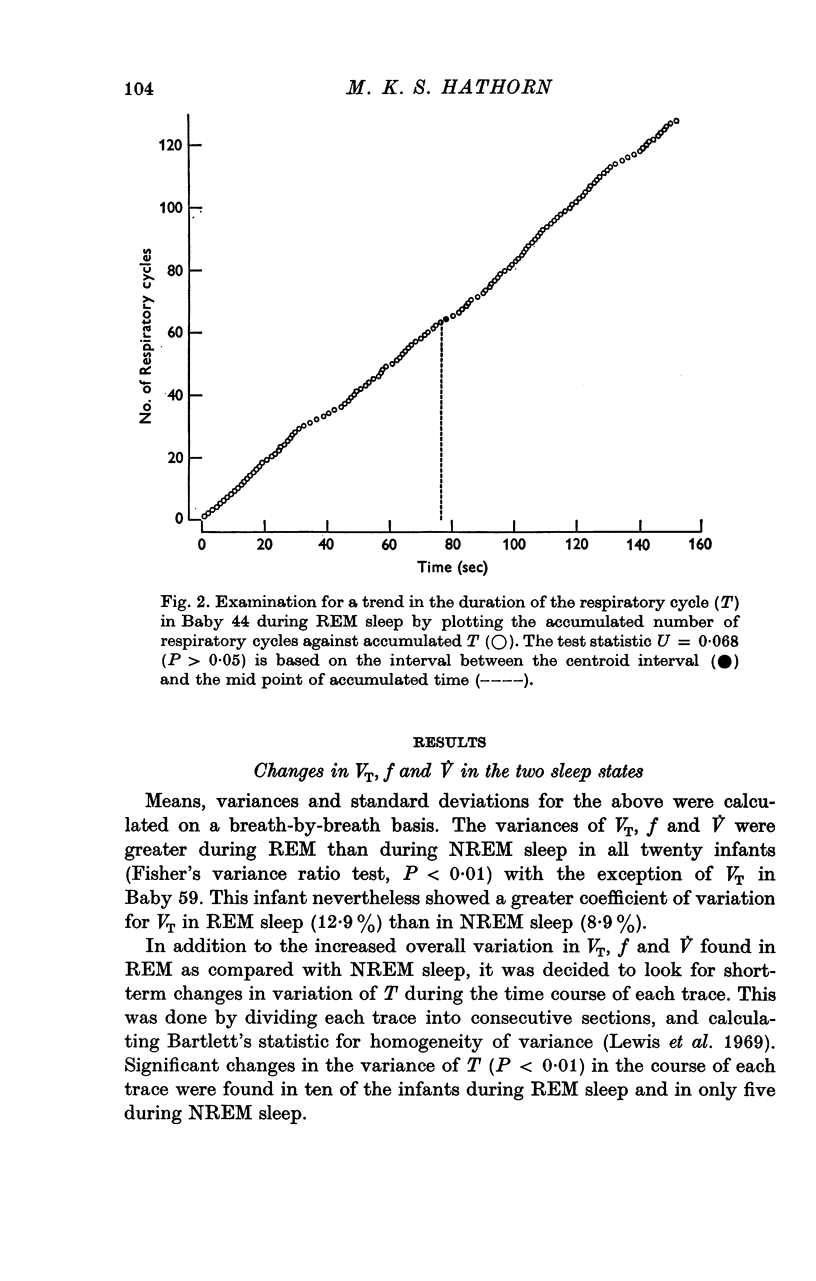
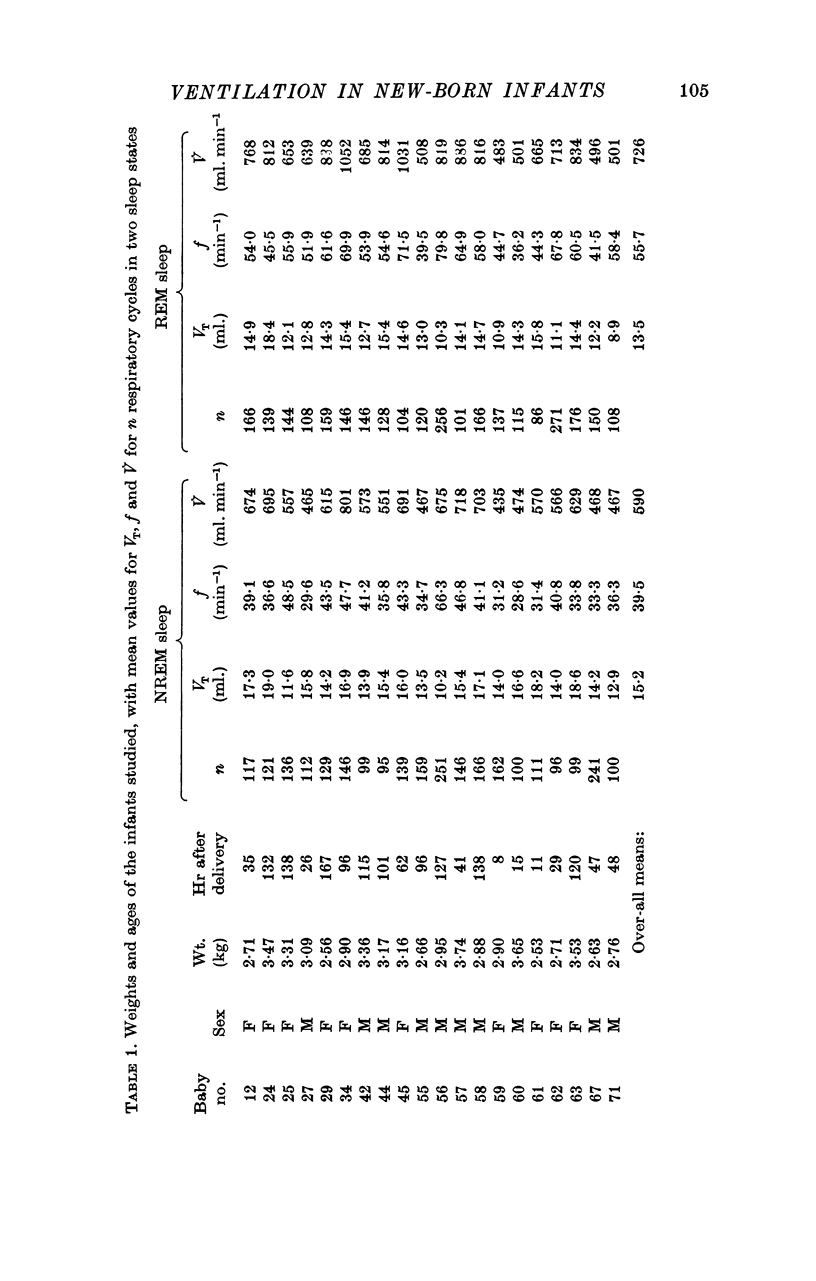
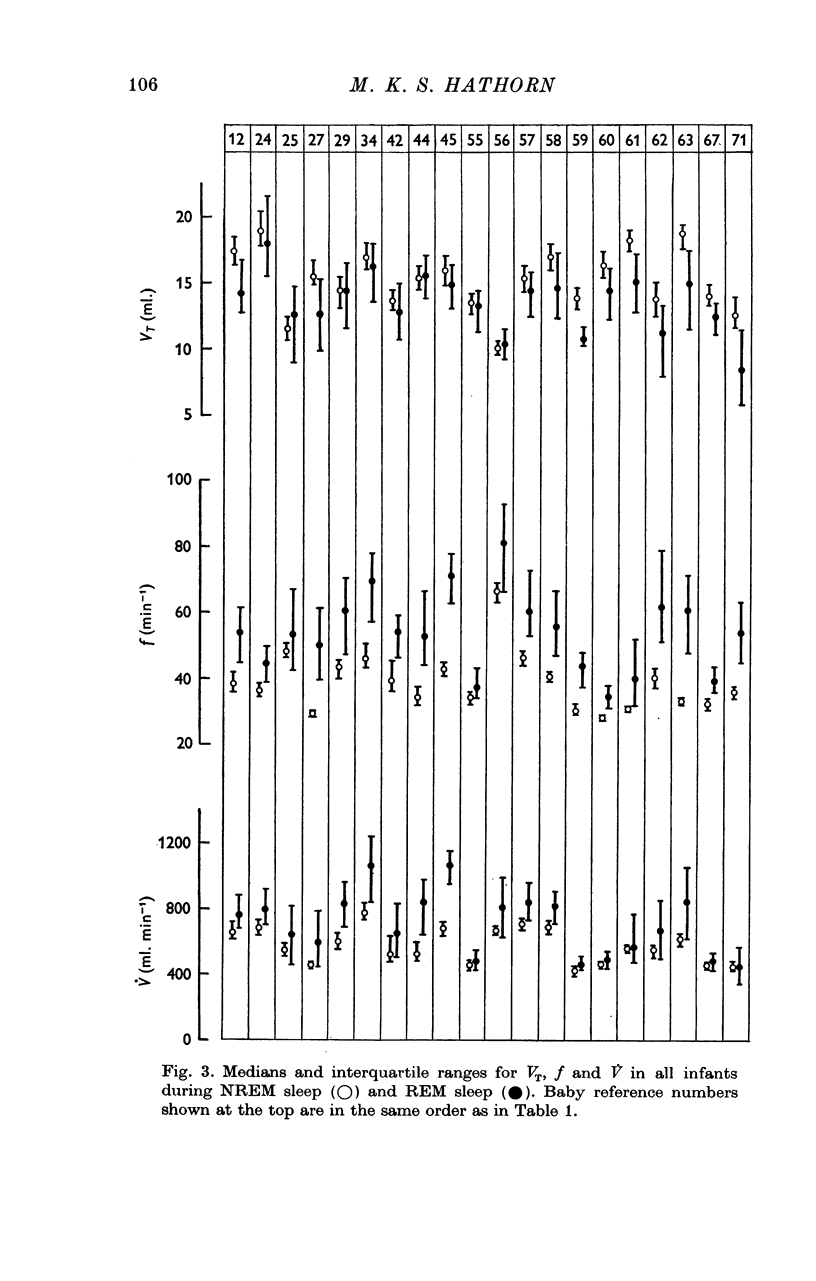

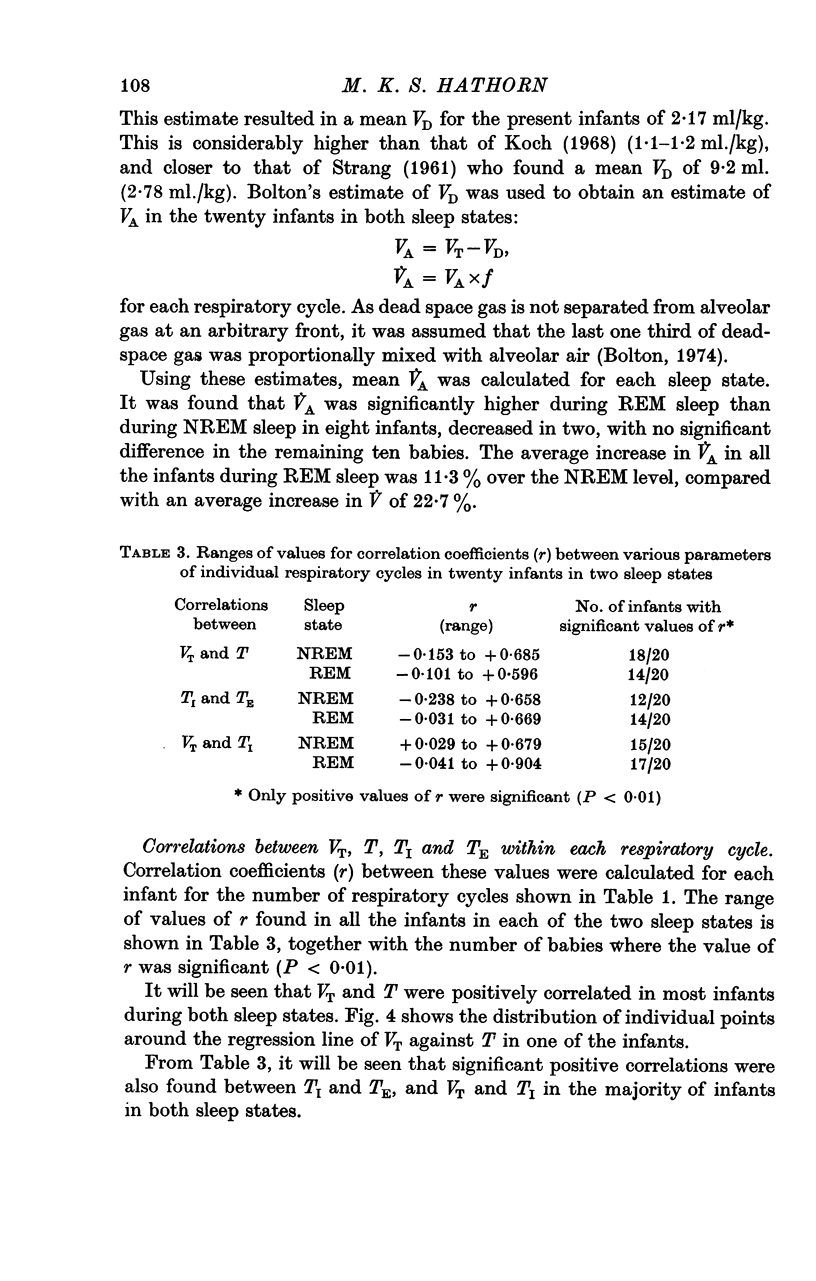
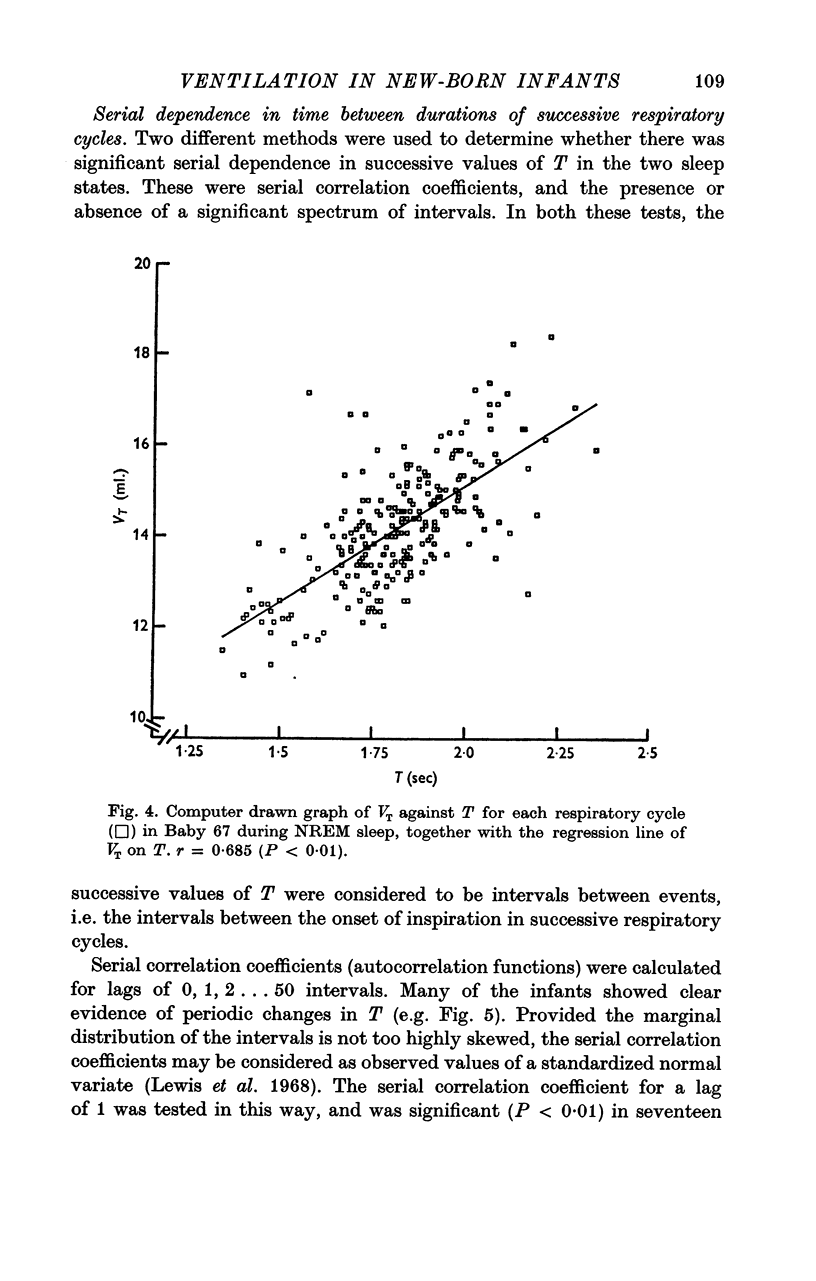



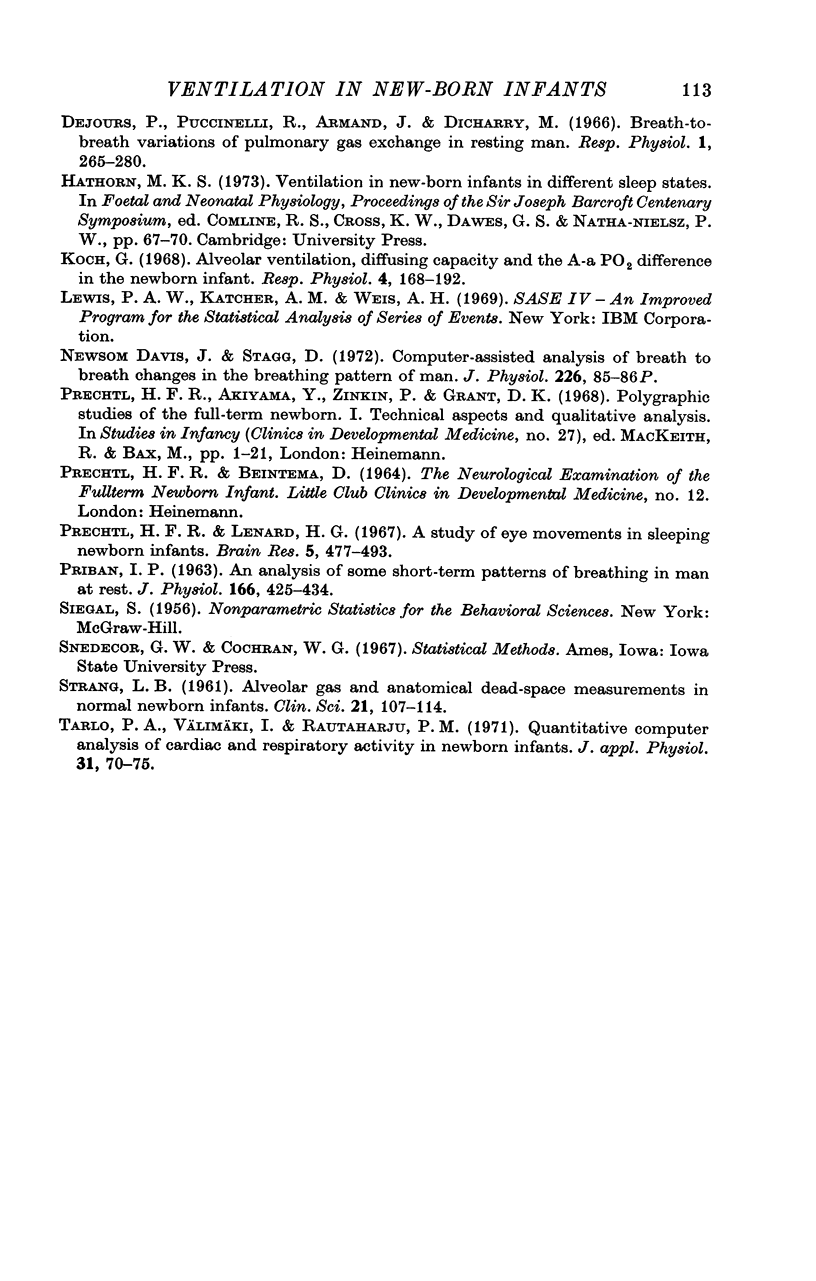
Selected References
These references are in PubMed. This may not be the complete list of references from this article.
- Ashton R., Connolly K. The relation of respiration rate and heart rate to sleep states in the human newborn. Dev Med Child Neurol. 1971 Apr;13(2):180–187. doi: 10.1111/j.1469-8749.1971.tb03243.x. [DOI] [PubMed] [Google Scholar]
- Bolton D. P., Herman S. Ventilation and sleep state in the new-born. J Physiol. 1974 Jul;240(1):67–77. doi: 10.1113/jphysiol.1974.sp010599. [DOI] [PMC free article] [PubMed] [Google Scholar]
- Brebbia D. R., Altshuler K. Z. Oxygen consumption rate and electroencephalographic stage of sleep. Science. 1965 Dec 17;150(3703):1621–1623. doi: 10.1126/science.150.3703.1621. [DOI] [PubMed] [Google Scholar]
- CROSS K. W. The respiratory rate and ventilation in the newborn baby. J Physiol. 1949 Sep;109(3-4):459–474. doi: 10.1113/jphysiol.1949.sp004409. [DOI] [PMC free article] [PubMed] [Google Scholar]
- Cross K. W., Lewis S. R. Upper respiratory obstruction and cot death. Arch Dis Child. 1971 Apr;46(246):211–213. doi: 10.1136/adc.46.246.211. [DOI] [PMC free article] [PubMed] [Google Scholar]
- Dejours P., Puccinelli R., Armand J., Dicharry M. Breath-to-breath variations of pulmonary gas exchange in resting man. Respir Physiol. 1966;1(3):265–280. doi: 10.1016/0034-5687(66)90046-6. [DOI] [PubMed] [Google Scholar]
- Koch G. Alveolar ventilation, diffusing capacity and the A-a PO2 difference in the newborn infant. Respir Physiol. 1968 Mar;4(2):168–192. doi: 10.1016/0034-5687(68)90050-9. [DOI] [PubMed] [Google Scholar]
- PRIBAN I. P. An analysis of some short-term patterns of breathing in man at rest. J Physiol. 1963 May;166:425–434. doi: 10.1113/jphysiol.1963.sp007114. [DOI] [PMC free article] [PubMed] [Google Scholar]
- Prechtl H. F., Lenard H. G. A study of eye movements in sleeping newborn infants. Brain Res. 1967 Aug;5(4):477–493. doi: 10.1016/0006-8993(67)90018-2. [DOI] [PubMed] [Google Scholar]
- Tarlo P. A., Välimäki I., Rautaharju P. M. Quantitative computer analysis of cardiac and respiratory activity in newborn infants. J Appl Physiol. 1971 Jul;31(1):70–75. doi: 10.1152/jappl.1971.31.1.70. [DOI] [PubMed] [Google Scholar]


